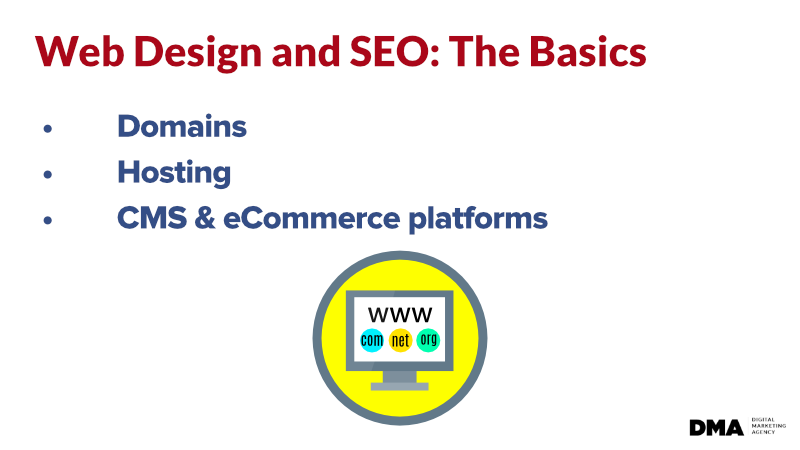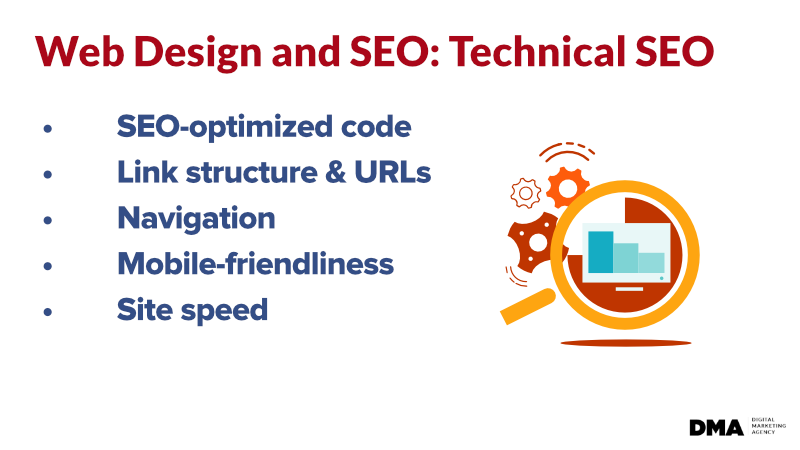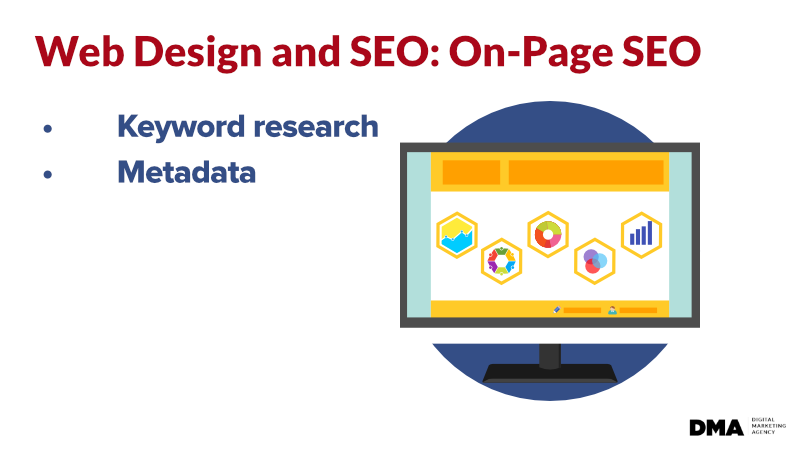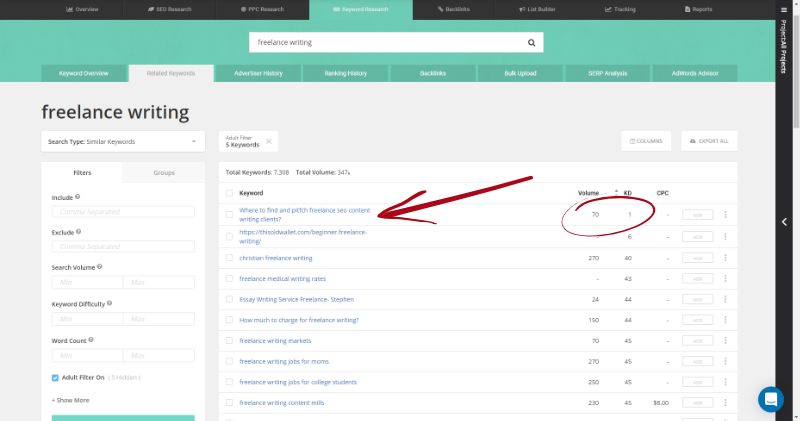SEO
Free SEO Analysis
SEO Services
Content Marketing Services
Local SEO
Link Building Services
Specialized SEO Services
PPC
REPUTATION MANAGEMENT
Free Reputation Management Analysis
Reputation Management Services
Review Management Services
Specialized Reputation Management Services
CEO Reputation Management
Brand Enhancement
Business and Directory Listings
Comprehensive Reputation Management Audit
SOCIAL MEDIA
Free Social Media Analysis
Specialized Social Services
WEB DEVELOPMENT
Free Website Analysis
Web Design Services
Mobile Development Services
Website Maintenance Services
Specialized Development Services
MARKETING AUTOMATION
Free Marketing Automation Analysis
Specialized Marketing Automation Services
Comprehensive Marketing Automation
INDUSTRIES
ABOUT DMA
Web Development
Web Design and SEO: How to Boost Rankings With a Great Design
Request a quote
Its Fast, Easy & Free
Executive Summary
- Your website is often your first, best, and only chance to make a good impression when someone searches for your products and services to find you online.
- A well-structured site makes it easy for people and search engines to navigate your site and know what each page is about.
- If your site isn’t great on mobile, your mobile users are going to leave and Google is going to take note and shuffle your site lower in the rankings.
Web design and SEO go hand in hand. By designing and developing your website to make it search engine friendly, you can better meet the needs of both users and search engines. This means higher rankings for your site!
Building an SEO-friendly website makes it easier for search engines to crawl and index your pages and return your site among the most relevant search results.
When you consider that fewer than 5% of searchers look at sites outside of the top three results, having a site that ranks high is so important for getting your site and content in front of the people you want to see it.
In this article, we’ll show you how to use web design and SEO together to dominate search results.
You’ll learn web design and SEO tips for both technical and on-page SEO as well as the fundamentals you need to use to ensure that your site has a strong SEO foundation.
How to Use Web Design and SEO to Dominate Rankings
Web design and SEO are two things that your business can’t afford to ignore. Here’s what to focus on to make sure that you’re putting your best site forward.
Web Design and SEO: Basics
Before you even get into creating content, you’ll need to get these two key foundational items taken care of.

Domains & Hosting
Get started on the right foot with the right domain and hosting. The purpose of your domain in SEO is to create a recognizable name for your brand.
While search engines used to place a high value on exact match domains, that’s no longer the case. When you’re considering domains, focus on domains that will identify your business and that relate to your branding. You’ll want to pick something that makes it easy for people to remember you.
While it’s nice to have a keyword name, it’s much more important to have a relevant domain that’s short and easy for users to remember. While the length of your domain name doesn’t really do much for your rankings, it will make a huge difference when it comes to helping users find you.
So, it might be nice to have a domain like yourbusinessnameandwhatyoudo.com, it’s probably going to be easier for users to remember yourbusinessname.com.
As for hosting, it’s important to look for domain hosts that are fast. And, while you can change your host, it’s a lot easier to stay put. So, it’s much better to take a look at everything your host has to offer before committing.
Content Management System or eCommerce Platform
There are tons of different CMS and eCommerce platforms available. Choosing the right one can have a big impact on your SEO success.
WordPress is a great option for content management. If you run an eCommerce business, you can easily add WooCommerce to your WordPress site and have a very powerful eCommerce backend right in your WordPress dashboard.
Before you choose a CMS or eCommerce platform, make sure you understand your needs and what each platform has to offer. Shopify, for example, is built to be pretty user-friendly. Magento, on the other hand, is intended to be powerful and robust for larger businesses.
Web Design and SEO: Technical SEO
Now that you’ve chosen a domain, hosting, and CMS or eCommerce platform, let’s take a look at some technical SEO elements to keep in mind while building your website.

SEO-Optimized Code
CSS or HTML are best for SEO-friendly web design. While Google and Bing can handle other types of code, Flash-dependent pages pose a problem. Plus, Flash is quickly becoming deprecated across browsers.
Keep your code minimal so your site is more easily crawled and indexed.
Link Structure & URLs
Your homepage is the easiest thing for search engines to index. But, you want your other pages and posts ranked, too.
Internal linking helps with this.
With internal linking, search engines can crawl and index your content, but it’s important to use a naming convention for your URLs that makes sense and provides context to users and search engines.
Use URLs that are descriptive and easy to understand.
Navigation
Your site’s navigation is also incredibly important. A well-structured site makes it easy for people and search engines to navigate your site and know what each page is about.
This goes beyond a navigation menu at the top of your site.
Before you build your site, really take the time to consider what your users want or need from your site—and how they would go about finding it.
It’s easy for you as the site owner or website builder to understand your own site’s navigation, so it’s really important to look at your site from the perspective of users who may be unfamiliar with what you have to offer.
Navigating your site shouldn’t require much thought. And, if users don’t quickly find what they need from your site, they will absolutely go somewhere else. A quick Google search for just about any topic shows that they’ll be able to find it somewhere else, too.
Mobile-Friendliness
Google introduced mobile-first indexing in 2017. This means that sites with better mobile performance are ranked higher than sites that aren’t as mobile-friendly.
Even so, there are many sites that haven’t made the jump to mobile-first—or even mobile-friendly—design.
Don’t be one of those non-mobile businesses.
More and more searches are happening on mobile devices and more than half of all web traffic comes from mobile devices. It just doesn’t make sense to ignore mobile-friendliness.
If your site isn’t great on mobile, your mobile users are going to leave and Google is going to take note and shuffle your site lower in the rankings.
Check out this article for ways to create a mobile-friendly site design.
Speed
Along the same lines as mobile-friendliness is site speed. Your website’s design has to load quickly. You can help this along by choosing a website design that is simple and clean.
A really easy way to speed up your site is by compressing your images. But that’s by no means the only thing you can do to create a speedier site design. You can also optimize and minify your CSS and JavaScript.
For more ways to build a speedier site, take a look at these seven ways to improve website speed.
Web Design and SEO: On-Page SEO
Next up, we’re going to talk about on-page SEO. This includes everything that happens on your site to help boost your rankings. These strategies are vital to helping search engines crawl and index your content—and help users understand it better.

Keyword Research
Keyword research is important in creating a well-organized site that meets the needs of users. But it doesn’t have to be complicated.
Here’s a simple keyword research process you can use to ensure that your content is SEO-friendly and matches search intent.
1. Brainstorm a Broad List of Topics Relevant to Your Business
Start by thinking about the different topics that relate to your business. You don’t have to get into the nitty-gritty right now. Just start with broad categories.
For example, if you’re a personal trainer, you could start your list with the types of services you offer and the types of clients you serve.
2. Use Keyword Research Tools to Fine-Tune Your List
Now that you have a list of broad topics and categories, you need to start thinking like your target audience. How would they find your business? What kinds of things are they searching for when they’re looking for your services?
Using our personal trainer example, we might have a “get stronger” category. What types of things go into getting stronger? What are the reasons that people may need to build strength (recovering from an injury, participating in a contest, etc)?
This could then lead to the ways people want to get stronger. Maybe “free weights,” “CrossFit,” or “bodyweight exercises” are good search terms for you.
If you offer local services, you’ll want to include search terms like “near me” and your city name, too!
Of course, your brain will only take you so far. To get the most out of your keyword research, you’ll probably want a keyword research tool.
In addition to helping you find even more keywords that you can go after, these tools can help you find out which keywords actually get search volume and will drive traffic to your site. Plus, you’ll be able to find the keywords that are easier to rank for.
Type your main topics into a keyword research tool and see what pops up. Then, use the rest of the keywords you brainstormed to find out their search volume and if they’re worth ranking for.
Pay particular attention to keywords that have a high search volume, but low competition (your keyword research tool should be able to provide this information).

Metadata
Contrary to what some people believe, meta descriptions don’t directly impact your search rankings.
Why bother with them, then?
You should use them because they’re really important in convincing a searcher to pick your link out of the search results. A strong meta description can make the difference between getting a click and the user scrolling on by.
The more clicks you get, the more users are going to end up seeing your content since it will rank higher (as long as your content is high-quality and engaging, of course).
To create the best meta descriptions, they should:
Describe the page’s content accurately
Be compelling and inspire users to click
Include your target keywords naturally
Search engines like Google will even bold the user’s search terms in your page’s title and meta description, so using the right keywords in your meta descriptions and SEO titles can have a big impact.
Sometimes, Google will decide that it doesn’t like your meta description and will instead pull a snippet directly from your page to create a meta description that better matches the user’s search.
That’s okay! Google is recognizing that your content is valuable, but that your meta description isn’t the best possible one to convey your content’s value to searchers. In order to get your content the attention Google thinks it deserves, it pulls a more accurate snippet from your page to show searchers.
Hire an Expert Web Design Firm
Your website is often your first, best, and only chance to make a good impression when someone searches for your products and services to find you online. And, it takes a lot of time and effort to make a good first impression.
That’s why you’ll want to consider hiring an expert web design firm that’s knowledgeable in SEO best practices. That way, you can get your site built from the ground up with SEO in mind.
Digital Marketing Agency has been building beautiful websites for more than 15 years. In that time, we’ve helped businesses large and small close the deal. Regardless of whether you're looking for an aesthetically pleasing showcase of your best work or a helpful and intuitive website touting the benefits you bring to the table, our design team is ready to create your beautifully interactive, SEO-friendly website.
It’s vital to the survival of your business to build a website that conveys the right message to the buyer, regardless of how they get to your site. We use responsive design and mobile-friendly practices to optimize your site’s visual elements to a variety of screen sizes, leading to greater conversion rates. This ensures a consistent approach across desktop, tablet, and mobile platforms.
Contact us today for a free quote!
Our Sales team